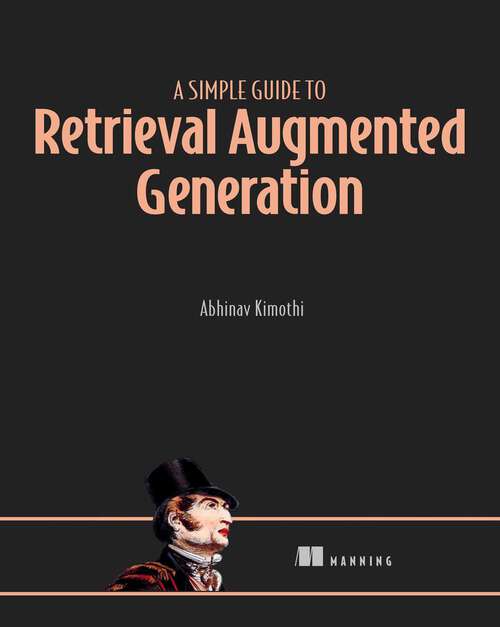
A Simple Guide to Retrieval Augmented Generation
Computers and internet
Synthetic audio, Automated braille
Summary
Everything you need to know about Retrieval Augmented Generation in one human-friendly guide.Augmented Generation—or RAG—enhances an LLM&’s available data by adding context from an external knowledge base, so it can answer accurately about proprietary content, recent information, and even live… conversations. RAG is powerful, and with A Simple Guide to Retrieval Augmented Generation, it&’s also easy to understand and implement! In A Simple Guide to Retrieval Augmented Generation you&’ll learn: • The components of a RAG system • How to create a RAG knowledge base • The indexing and generation pipeline • Evaluating a RAG system • Advanced RAG strategies • RAG tools, technologies, and frameworks A Simple Guide to Retrieval Augmented Generation gives an easy, yet comprehensive, introduction to RAG for AI beginners. You&’ll go from basic RAG that uses indexing and generation pipelines, to modular RAG and multimodal data from images, spreadsheets, and more. About the Technology If you want to use a large language model to answer questions about your specific business, you&’re out of luck. The LLM probably knows nothing about it and may even make up a response. Retrieval Augmented Generation is an approach that solves this class of problems. The model first retrieves the most relevant pieces of information from your knowledge stores (search index, vector database, or a set of documents) and then generates its answer using the user&’s prompt and the retrieved material as context. This avoids hallucination and lets you decide what it says. About the Book A Simple Guide to Retrieval Augmented Generation is a plain-English guide to RAG. The book is easy to follow and packed with realistic Python code examples. It takes you concept-by-concept from your first steps with RAG to advanced approaches, exploring how tools like LangChain and Python libraries make RAG easy. And to make sure you really understand how RAG works, you&’ll build a complete system yourself—even if you&’re new to AI! What&’s Inside • RAG components and applications • Evaluating RAG systems • Tools and frameworks for implementing RAG About the Readers For data scientists, engineers, and technology managers—no prior LLM experience required. Examples use simple, well-annotated Python code. About the Author Abhinav Kimothi is a seasoned data and AI professional. He has spent over 15 years in consulting and leadership roles in data science, machine learning and AI, and currently works as a Director of Data Science at Sigmoid. Table of Contents Part 1 1 LLMs and the need for RAG 2 RAG systems and their design Part 2 3 Indexing pipeline: Creating a knowledge base for RAG 4 Generation pipeline: Generating contextual LLM responses 5 RAG evaluation: Accuracy, relevance, and faithfulness Part 3 6 Progression of RAG systems: Naïve, advanced, and modular RAG 7 Evolving RAGOps stack Part 4 8 Graph, multimodal, agentic, and other RAG variants 9 RAG development framework and further exploration